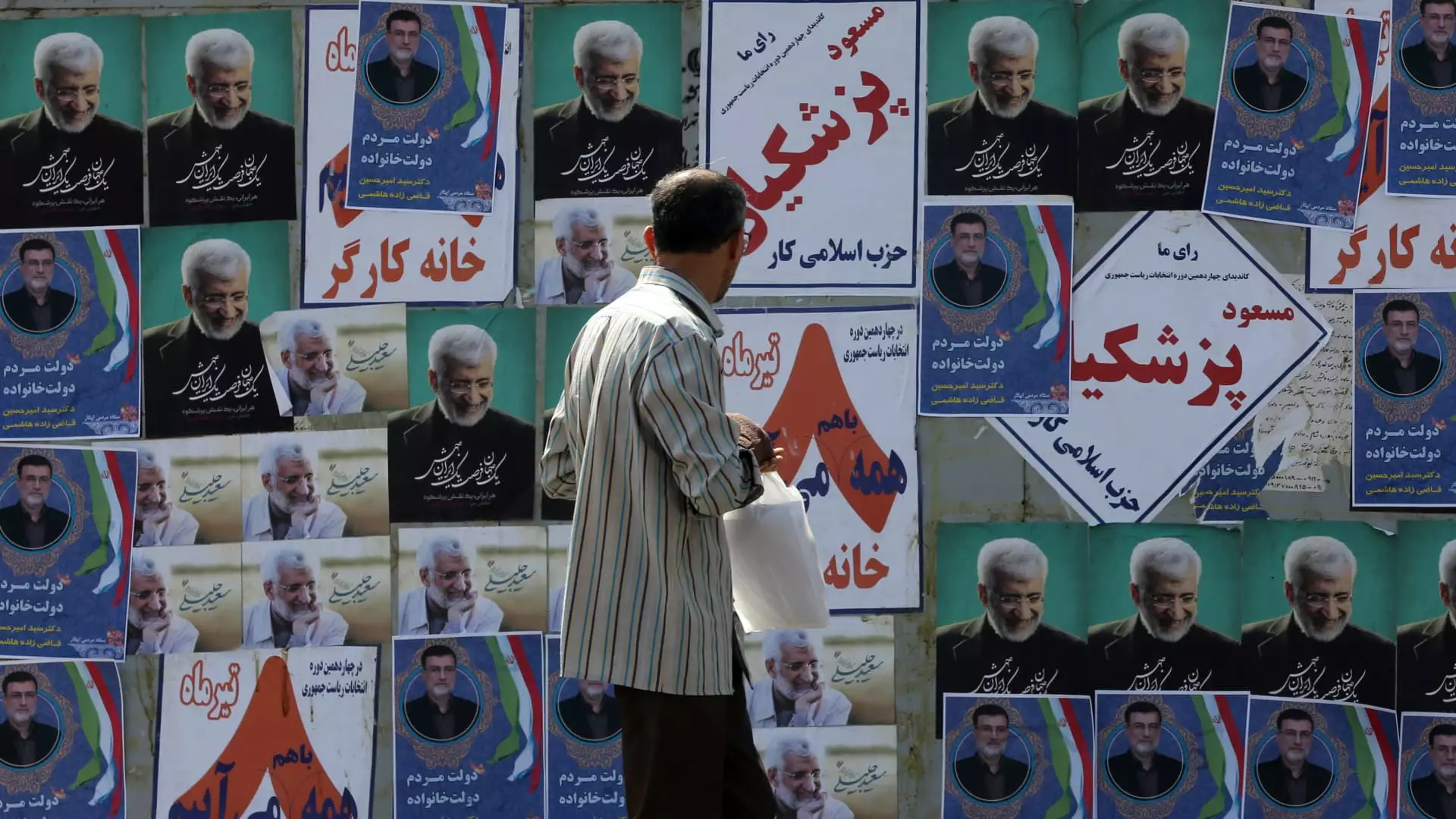The recent snap presidential elections in Iran have revealed a tight race between a low-key moderate candidate and a protégé of Iran’s supreme leader. The moderate candidate, Massoud Pezeshkian, has garnered over 5.9 million votes, while his hardline challenger, former nuclear negotiator Saeed Jalili, has received over 5.5 million votes. This neck-and-neck competition is reflective of the internal ideological struggle within Iran’s political landscape.
One of the key features of these elections is the low voter turnout, with reports suggesting that only around 40% of eligible voters participated. This apathy towards the electoral process reflects the growing discontent among the Iranian population over economic hardships and social restrictions imposed by the government. The lack of enthusiasm at the polling stations in major cities like Tehran further highlights the disconnection between the rulers and the ruled.
The outcome of these elections has far-reaching implications for regional dynamics, especially amidst escalating tensions between Israel and Iranian allies in Gaza and Lebanon. The winner of the presidency will play a crucial role in shaping Iran’s foreign policy, which could have ripple effects across the volatile Middle East region. The Western powers are also closely monitoring the developments in Iran, especially regarding its nuclear program.
The clash of ideologies between the moderate and hardline candidates is at the heart of this electoral showdown. Pezeshkian advocates for detente with the West, economic reforms, social liberalization, and political pluralism. On the other hand, Jalili represents a staunch anti-Western stance and is likely to pursue a more antagonistic foreign policy approach. The contrasting visions of the two candidates underscore the deep-seated divisions within Iranian society.
The low turnout in recent elections reflects a broader legitimacy crisis facing the clerical establishment in Iran. Public discontent over economic mismanagement, corruption, and restrictions on personal freedoms has eroded the system’s credibility. The Iranian population, especially the youth, is increasingly disillusioned with the ruling elites and is demanding meaningful change.
Economic Imperatives
All candidates in the presidential race have pledged to address the economic challenges facing Iran, including high levels of corruption, mismanagement, and the impact of international sanctions. The revival of the economy is a top priority for the next president, who will be tasked with navigating through complex geopolitical challenges while fostering domestic growth and stability.
The Iranian presidential elections are not just about choosing a new leader but are a reflection of the broader struggle for the soul of the nation. The outcome of these elections will shape Iran’s trajectory in the coming years and will have profound implications for regional stability and global politics. The Iranian people have a critical choice to make, one that will determine the future course of their country and its place in the world.

Leave a Reply